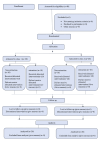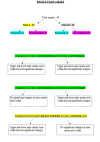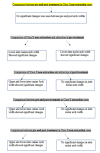A Comparative Analysis of Arch Widths in Class I and Class II Malocclusion: Extraction vs. Non-extraction Treatment
- PMID: 38738108
- PMCID: PMC11087014
- DOI: 10.7759/cureus.57982
A Comparative Analysis of Arch Widths in Class I and Class II Malocclusion: Extraction vs. Non-extraction Treatment
Abstract
Introduction: This study aimed to assess and compare dental arch widths in the anterior and posterior regions among patients undergoing extraction and non-extraction treatments for Class I and Class II malocclusions.
Materials and methodology: A total of 40 patients were selected, with 10 in each of the categorized groups based on malocclusion type and treatment status. Dental arch widths were meticulously measured using a digital Vernier caliper at the canine and molar regions to ensure precise data collection.
Results: Statistically significant differences were noted when comparing mean inter-canine and molar widths between pre- and post-treatment periods among extraction cases in Class I malocclusion (p < 0.001). Conversely, there were no significant changes observed in arch widths among non-extraction cases in Class I malocclusion. Similarly, significant changes were observed in both extraction and non-extraction cases of Class II malocclusion when comparing mean inter-canine and molar widths between pre- and post-treatment periods (p < 0.05).
Conclusion: After treatment, both Class I and Class II extraction cases showed an increase in inter-canine arch width, while intermolar arch width remained unchanged, suggesting that the treatment did not significantly alter the buccal corridor. Additionally, there were no notable changes in inter-canine arch widths between pre- and post-treatment in Class I non-extraction cases. However, the Class II non-extraction group exhibited increased upper and lower inter-canine arch widths after treatment.
Keywords: arch width; class 1 malocclusion; class 2 malocclusion; digital vernier caliper; extraction treatment; non-extraction treatment.
Copyright © 2024, Hegde et al.
Conflict of interest statement
The authors have declared that no competing interests exist.
Figures











References
-
- Dental arch dimensions in the mixed dentition: a study of Brazilian children from 9 to 12 years of age. Louly F, Nouer PR, Janson G, Pinzan A. https://europepmc.org/article/MED/21552719. J Appl Oral Sci. 2011;19:169–174. - PMC - PubMed
-
- Archform in orthodontics: a review. Tiwari A, Garg A, Virang B, Sahu S, Shah N, Verma N. J App Med Dent Sci. 2018;4:118–127.
-
- Arch-width changes in extraction vs nonextraction treatments in matched Class I borderline malocclusions. Herzog C, Konstantonis D, Konstantoni N, Eliades T. Am J Orthod Dentofacial Orthop. 2017;151:735–743. - PubMed
-
- Smile estheties after orthodontic treatment with and without extraction of four first premolars. Johnson DK, Smith RJ. https://www.sciencedirect.com/science/article/abs/pii/S088954069570079X Am J Orthod Dentofac Orthop. 1995;108:162–167. - PubMed
-
- Nonextraction orthodontic therapy: posttreatment dental and skeletal stability. Glenn G, Sinclair PM, Alexander RG. https://pubmed.ncbi.nlm.nih.gov/3477951/ Am J Orthod Dentofacial Orthop. 1987;92:321–328. - PubMed
LinkOut - more resources
Full Text Sources
